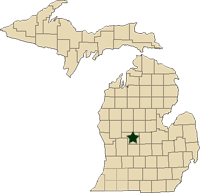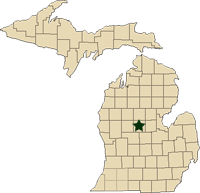Regional reports on Michigan field crops – April 12, 2012
MSU Extension educators’ pest and field crop updates for Michigan.
This week’s regional reports:
- West Central Michigan – Fred Springborn
- Central Michigan – Paul Gross
West Central Michigan – Fred Springborn, Michigan State University Extension
|
Weather
Much of the west central region has experienced the mildest winter and spring weather anyone can remember. Soil temperatures were close to the freezing mark at the 2-inch level for much of December, January and February, and often hovering just above freezing. The absence of snow cover was also notable this year and likely contributed to the fluctuation of soil temperatures. Soil conditions are quite dry in many areas allowing for spring tillage to occur ahead of schedule. Winter annual weed growth is quite vigorous in many fields. Several nights of frost and hard freeze has slowed the enthusiasm of many growers who are ready to get into the fields and plant spring crops.
Crops
Most of the wheat crop is in Feekes stage 5 with a few at stage 6. We are rapidly approaching the close of the window to apply growth regulator herbicides, such as 2,4 D, to wheat. There are a number of fields that are showing symptoms of burn from 28 percent nitrogen fertilizer application, as well as many others that are exhibiting the alternating dark green and pale green streaks from less than optimal spinner spreader application of granular fertilizer.
Oats planting is nearly complete and many fields have emerged. Rye is in Feekes stage 6 with a few fields still at 5, many fields that were planted as a cover crop are being killed.
Very little large-scale planting of potatoes have occurred, but will likely get underway soon as soil temperatures warm back up. Field observations indicate that potatoes on the surface froze over the winter, but many survived if they were buried in the soil or were protected by crop residue. Monitor cull potato piles, fields where culls were spread, and last season’s potato fields closely this year for volunteer potatoes.
Alfalfa had a big head start this year reaching 6 to 10 inches in height, only to be frosted back. New seedings are being planted.
Nearly all sugarbeets have been planted with a few fields emerged.
Only a very small amount of corn has been planted (less than 1 percent).
Central Michigan – Paul Gross, Michigan State University Extension
|
Weather
The unusually warm winter followed by record high temperatures in March appears to be getting the 2012 growing season off to a fast start. Mid-March soil temperatures were in the mid-50s and near ideal field conditions is tempting many farmers to begin planting two to three weeks ahead of normal. However, below freezing temperatures in the first two weeks of April has tempered the urge to plant. Soil temperatures this week have dropped to the low 40s. Soil conditions are dry in most areas and warm rains will be needed for good seed germination when planting begins. Farmers are reminded that in central Michigan we have a 50-50 chance of a frost on May 12. It will not be until May 24 when there will be less than 10 percent chance of frost.
Commodity reports
Wheat is about two weeks ahead of normal this year with very good yield potential. The growth stages range from Feekes scale 4-6. Winter annual weeds are growing rapidly with the warm spring. Farmers that have not applied herbicides are advised to stage wheat correctly before selecting herbicides. Several fields are past the stage when growth regulator herbicides are recommended.
Little to no corn has been planted at this point. Burndown and preemergence herbicides are being applied. Many fields are being worked with many reporting near ideal field conditions. Most farmers are just waiting for the weather and calendar to be more favorable for planting.
Alfalfa broke dormancy in mid-March and has had good growth. However, the low freezing temperatures the last two weeks have frost-damaged most fields. Many fields have the top leaves frosted and have a white tint with the tips bent. The crop is expected to recover with warmer temperatures and rain. We expect yield to be somewhat lower. Using the growing degree day method to time first cutting will not work this year. New seedings are planted and off to a good start. Scout fields for alfalfa weevil because we have accumulated enough growing degree days for eggs to hatch.
The oat crop is planted with most fields emerging. Some early planted fields have been hit by some frost and are expected to recover.
Sugarbeets are planted with some early planted fields emerged. A good rain will be needed for good emergence in the later planted fields.



 Print
Print Email
Email






